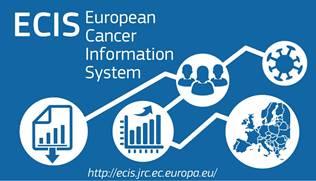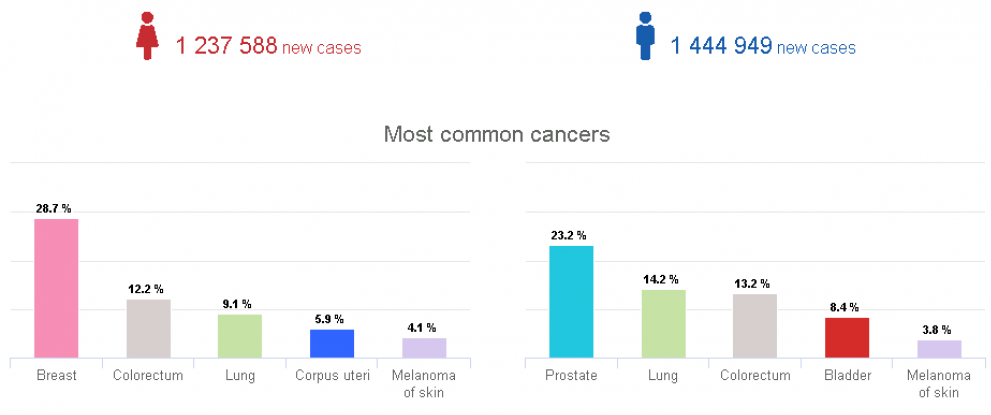
Today, the JRC released the 2020 estimates on the burden of cancer in the EU. Female breast cancer is still estimated to be the most commonly diagnosed cancer.
The cancer burden is estimated to have risen to 2.7 million new cases (all types, excluding non-melanoma skin cancer) and 1.3 million deaths in 2020.
These estimates reveal that cancer affects men slightly more than women, with 54% of new cases and 56% of deaths.
As is well known, cancer mostly affects older adults. The 2020 estimates reveal that 62% of estimated new diagnoses and 76% of estimated deaths occur in people over 65 years old.
What are the most common cancers diagnosed and what cancers cause most deaths?
Female breast cancer is the most commonly diagnosed cancer. Over 355,000 women in the EU-27 are estimated to be diagnosed with breast cancer in 2020 (13.3% of all cancer diagnoses). This is followed by colorectal (341,000, 12.7%), prostate (336,000, 12.5%) and lung cancer (318,000, 11.9%).

The most common causes of death are from cancers of the lung (20.4% of all cancer deaths), followed by colorectal (12.4%), female breast (7.3%) and pancreatic cancer (7.1%).
Higher incidence rates are estimated in the Nordic countries.
However, mortality rates for all cancers combined are estimated to be higher in Eastern countries, for both men and women.
How is the COVID-19 pandemic affecting the burden of cancer?
This is not clear yet, especially considering the geographical variations and irregular evolution of the pandemic across countries.
However, there have been reported delays in cancer screening and diagnoses. Yet in some countries, there have been reports that cancer diagnoses have picked up after the lockdown ended.
Unfortunately, the effects of this pandemic is not reflected in these 2020 estimates because they are based on incidence trends from past years.
Therefore, we might even observe a possible overestimation of 2020 incidence rates in some countries. We will however be able to account for this bias through detailed analyses when such data become available.
Background information
These 2020 estimates are the outcome of a collaborative project within the JRC and the European Network of Cancer Registries, together with the International Agency for Research on Cancer (IARC). They will be included in the forthcoming update of IARC’s GLOBOCAN project later this year.
Related Content
Details
- Publication date
- 22 July 2020
